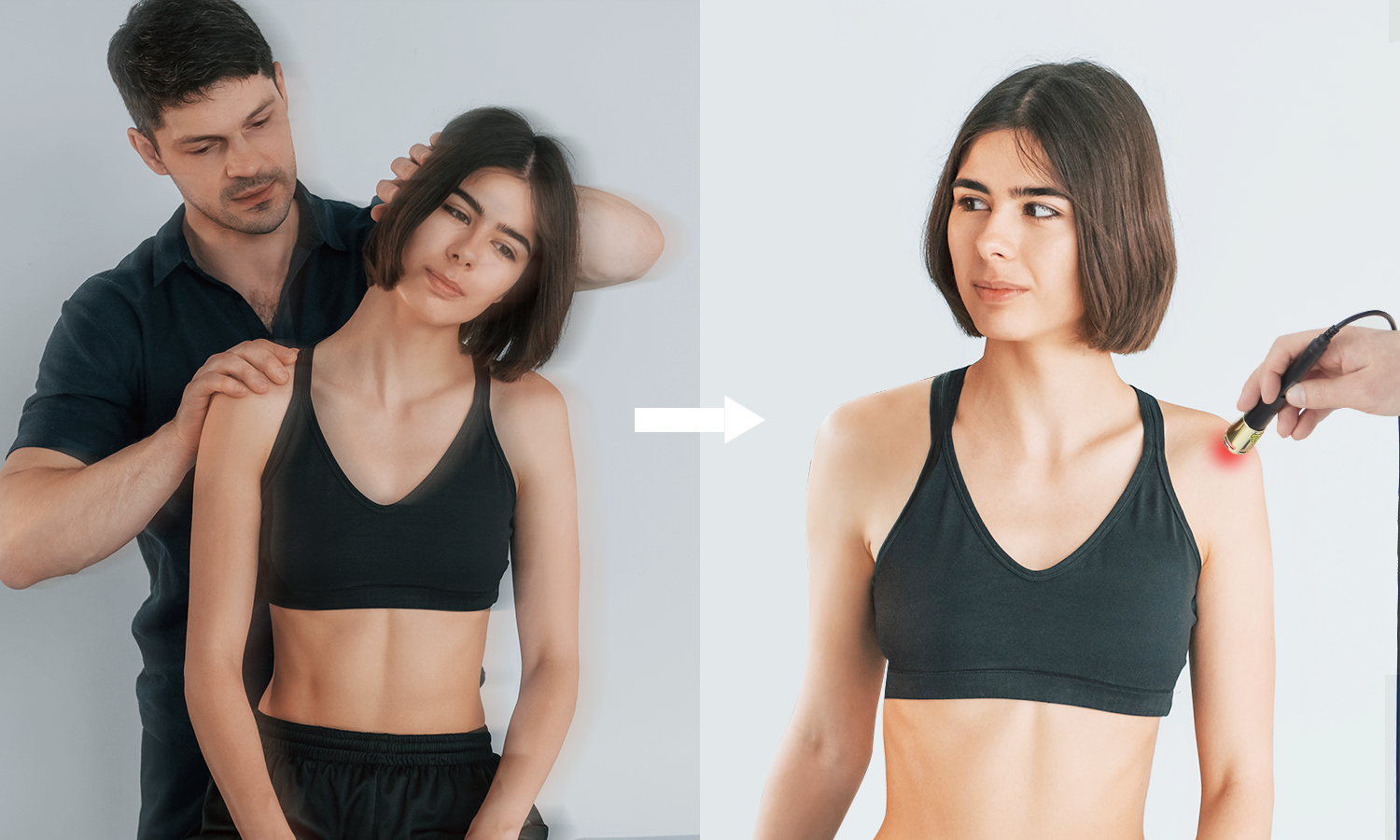
Can Laser Therapy Replace Your Physical Therapist? Here’s What the Science Says
Laser therapy has grown in popularity over the past decade, offering a non-invasive approach to pain relief and tissue repair. From professional sports rehab centers to home-use devices, laser therapy is being adopted by individuals seeking alternatives—or supplements—to traditional physical therapy. But can laser therapy truly replace your physical therapist? Let's explore what the science says.
1. What Is Laser Therapy? (Low-Level vs. High-Power Laser Therapy)
Laser therapy is a technique that uses specific wavelengths of light to stimulate tissue healing and relieve pain. It comes in two primary forms: Low-Level Laser Therapy (LLLT) and High-Power/Class IV Laser Therapy. Each offers unique therapeutic benefits, depending on the application and depth of treatment required.
1.1 Low-Level Laser Therapy (LLLT) Explained
Often referred to as cold laser therapy, LLLT uses lower power levels (typically below 500 milliwatts) to penetrate the skin without generating heat. This form of therapy is primarily aimed at stimulating cellular processes rather than producing thermal effects.
The key mechanism behind LLLT is photobiomodulation. When cells absorb photons from the laser light, it stimulates the mitochondria, increasing production of adenosine triphosphate (ATP)—the energy currency of cells. This boost in ATP accelerates cell regeneration, reduces inflammation, and enhances circulation. Cold laser therapy is commonly used to treat conditions such as carpal tunnel syndrome, tendonitis, and minor soft tissue injuries.
1.2 High Power/Class IV Laser Therapy Benefits
Class IV laser therapy, sometimes called high-intensity laser therapy (HILT), operates at power levels above 500 milliwatts and often goes up to 15 watts or more. Unlike LLLT, this higher intensity allows the laser to penetrate deeper tissues, reaching muscles, ligaments, and even bone structures.
The benefits of Class IV therapy include:
- Immediate pain relief through thermal and photochemical reactions
- Accelerated healing of musculoskeletal injuries
- Increased range of motion and reduced inflammation
Patients with low back pain, sciatica, knee osteoarthritis, and chronic joint pain often report significant improvements after a few sessions of Class IV laser therapy.
1.3 MATELASER Therapy vs. Traditional Lasers
MATELASER, a newer generation of therapeutic lasers, utilizes a single-wavelength 1064nm emission designed for optimal tissue penetration and consistent therapeutic outcomes. Unlike traditional systems, the 1064nm wavelength delivers deep, targeted photobiomodulation with minimal energy dispersion, enhancing cellular activation in deeper musculoskeletal tissues while ensuring precision and safety.
The advantages of MATELASER over traditional lasers include:
- Greater therapeutic versatility – suitable for both superficial and deep tissues
- Enhanced pain relief and tissue regeneration
- Professional treatment through expert pre-protocols
These features make MATELASER therapy particularly appealing in clinics where diverse conditions are treated—from post-op rehab to chronic pain management.
2. How Laser Therapy Works: The Science Behind Photobiomodulation
At the core of laser therapy’s success is the biological process known as photobiomodulation—the interaction of light with biological tissues to produce beneficial effects.
2.1 Mitochondrial Stimulation & ATP Increase
The primary target of photobiomodulation is cytochrome c oxidase, a respiratory enzyme found in mitochondria. When photons from the laser light are absorbed by this enzyme, it results in:
- Increased ATP production
- Improved cellular metabolism
This biochemical cascade is essential for tissue repair and regeneration, particularly in damaged or inflamed areas.
2.2 Anti-Inflammatory & Analgesic Mechanisms
Laser therapy is also effective at reducing inflammation and pain through several pathways:
- Nitric oxide release improves vasodilation and blood flow
- Reduced pro-inflammatory cytokines like IL-1 and TNF-alpha
- Endorphin release, providing natural pain relief
These combined effects make laser therapy especially effective for inflammatory conditions like bursitis, rheumatoid arthritis, and muscle sprains.
2.3 Tissue Repair: Collagen, Angiogenesis & Tendon/Bone Healing
Laser therapy stimulates the production of type I and type III collagen, which is crucial for the structural integrity of healing tissues. Additionally, it promotes:
- Angiogenesis (formation of new blood vessels)
- Osteoblast activation for bone remodeling
- Faster tendon repair, as shown in several clinical trials
Studies demonstrate that laser therapy can accelerate the fracture healing process and improve tendon strength in recovering athletes.
3. Clinical Evidence: Laser Therapy Outcomes for Musculoskeletal Conditions
Beyond theoretical mechanisms, there is growing clinical evidence supporting the efficacy of laser therapy in treating musculoskeletal disorders.
3.1 Chronic Pain Relief & Inflammation Reduction
Numerous meta-analyses and randomized controlled trials (RCTs) support the use of laser therapy for chronic pain management. In particular:
Patients with chronic low back pain showed significant improvement in pain scores and functional mobility
Neck pain and shoulder pain responded well to low-level laser sessions over 6–10 weeks
While results can vary based on dosage and technique, the trend is clear: laser therapy provides moderate-to-strong relief for chronic inflammatory conditions.
3.2 Tendinopathy, Arthritis & Joint Pain
For tendonitis, plantar fasciitis, and knee osteoarthritis, laser therapy has demonstrated effectiveness in:
- Reducing pain and stiffness
- Improving joint mobility
- Lowering reliance on NSAIDs or corticosteroids
A double-blind study published in The Lancet found that LLLT significantly reduced knee pain in osteoarthritis patients after just 8 sessions.
3.3 Sports Injuries & Postoperative Recovery
Laser therapy is frequently used in sports medicine to treat:
- Ankle sprains
- Muscle tears
- Post-surgical wounds
In these cases, the therapy accelerates healing time, reduces swelling, and shortens recovery timelines. Athletes often combine laser treatments with physical therapy for optimal results.
4. Can Laser Therapy Replace Traditional Physical Therapy?
While laser therapy offers impressive results in pain relief and healing, can it truly replace traditional physical therapy? Experts say: not entirely.
4.1 Supplement or Replacement?
Most physical therapists agree that laser therapy should be viewed as a supplement, not a substitute. While it excels in passive treatments like pain reduction and tissue repair, it doesn’t address:
- Muscle re-education
- Postural correction
- Functional movement training
Thus, for full recovery—especially in injuries involving joint mechanics or balance—exercise and manual therapy remain essential.
4.2 Function vs. Pain Control
Laser therapy primarily addresses pain and inflammation, but functional restoration—the ability to walk, lift, or rotate without limitation—requires active intervention. For example:
A patient with frozen shoulder may have less pain from laser therapy
But restoring range of motion often requires manual joint mobilizations and resistance training
This distinction is key when considering whether to replace physical therapy.
4.3 Contraindications & Realistic Expectations
Laser therapy isn’t a magic bullet. Contraindications include:
Pregnancy (over the abdomen)
Cancerous tumors
Epilepsy (with pulsed lasers)
Moreover, laser therapy may not be effective for all types of pain, particularly when caused by psychological or systemic conditions. A balanced, multi-modal approach is ideal, especially for complex injuries.
5. Implementation in Physical Therapy Clinics: Benefits & Limitations

MateLaser X1 Performance
$5,999.00
Experience fast, drug-free pain relief and faster healing with advanced laser therapy—where science meets recovery.
View ProductGiven the growing demand for non-invasive therapies, many physical therapy clinics are integrating laser systems into their practice. But it’s important to understand both the benefits and challenges.
5.1 Clinic Benefits: Patient Retention & Revenue
Clinics offering laser therapy often report:
- Higher patient satisfaction due to faster results
- Increased retention, as patients are more likely to complete their care plans
- New revenue streams, since laser sessions can be billed separately or sold in packages
It also helps clinics stand out from competitors not offering advanced modalities.
5.2 Optimal Treatment Protocols
Laser therapy is dose-dependent, meaning results vary based on:
- Wavelength (e.g., 650nm for superficial, 980nm for deep tissues)
- Dosage and power class (Class III vs. Class IV)
- Number of sessions, typically 6–12 for chronic issues
Evidence-based protocols are essential. Overuse may desensitize cells, while underuse provides minimal benefit. Many practitioners use protocol builders or manufacturer-provided guidelines.
5.3 Access, Insurance, and Cost Considerations
Laser therapy isn’t always covered by insurance. Session costs typically range from $75 to $100, depending on device type and location.
Barriers include:
- Lack of standardization across clinics
- Out-of-pocket expenses for patients
- Need for provider training to avoid misuse or ineffective treatment
Despite this, patients seeking non-pharmacological pain relief often find the investment worthwhile.
6. A Complement, Not a Competitor—Yet
Laser therapy is a scientifically backed, clinically useful tool for managing pain and promoting tissue healing. It shows great promise in treating chronic conditions, speeding up recovery, and even replacing certain drug therapies. However, it is not a full replacement for physical therapy.
While it offers significant benefits for pain control and cellular repair, functional movement, strength retraining, and biomechanical corrections still require hands-on therapeutic intervention. The best outcomes often arise from an integrative approach, combining the strengths of both laser technology and traditional rehabilitation.
In short, your physical therapist probably isn’t going anywhere—but they may soon be pointing a laser wand.

